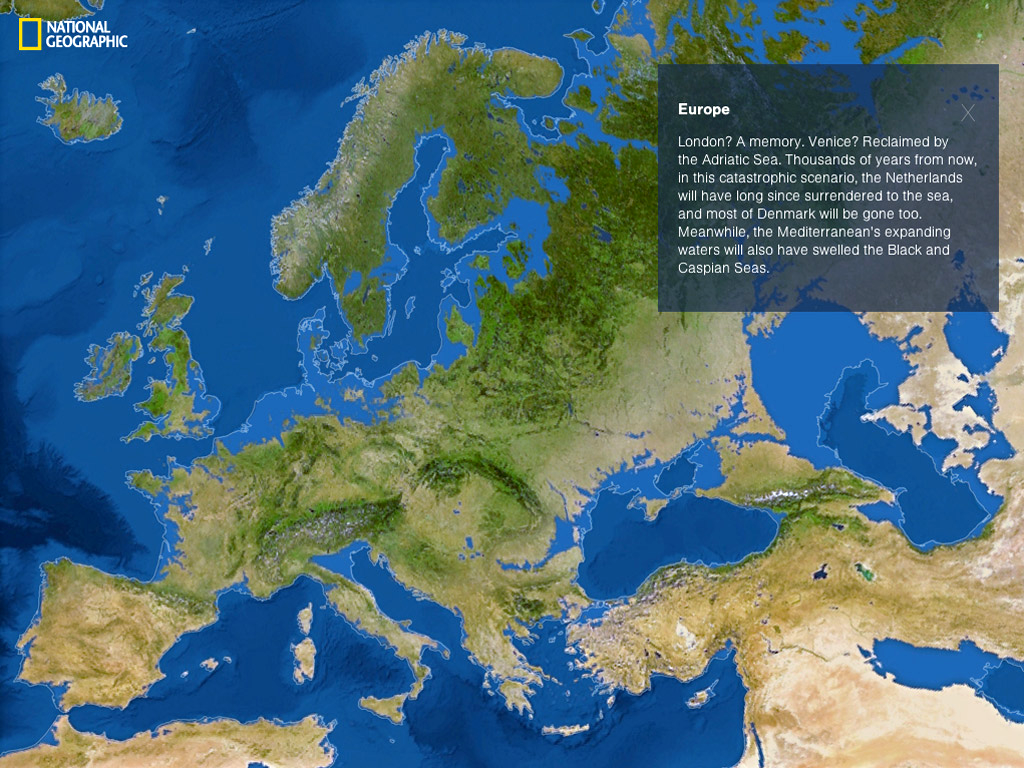The life aquatic: How the Earth would look if all the ice melted

Your support helps us to tell the story
From reproductive rights to climate change to Big Tech, The Independent is on the ground when the story is developing. Whether it's investigating the financials of Elon Musk's pro-Trump PAC or producing our latest documentary, 'The A Word', which shines a light on the American women fighting for reproductive rights, we know how important it is to parse out the facts from the messaging.
At such a critical moment in US history, we need reporters on the ground. Your donation allows us to keep sending journalists to speak to both sides of the story.
The Independent is trusted by Americans across the entire political spectrum. And unlike many other quality news outlets, we choose not to lock Americans out of our reporting and analysis with paywalls. We believe quality journalism should be available to everyone, paid for by those who can afford it.
Your support makes all the difference.A huge swathe of eastern England, most of Denmark, the entire eastern seaboard of the United States, Bangladesh and a huge chunk of China would be lost beneath the sea if all the world’s ice melted, according to maps produced by National Geographic magazine.
The interactive online maps show a radically different planet Earth after land ice in Greenland, the Antarctic and elsewhere all melted. If this happened, it would produce a sea level rise of about 216ft.
“There are more than five million cubic miles of ice on Earth, and some scientists say it would take more than 5,000 years to melt it all,” the magazine said.
“If we continue adding carbon to the atmosphere, we’ll very likely create an ice-free planet, with an average temperature of perhaps 80F [26.6 C] instead of the current 58F [14.4C].”
The maps show the Black Sea joining up with the Caspian Sea in Europe, while a vast lake is created in the middle of Australia. Africa fares better than the other continents, but Alexandria and Cairo in Egypt would be lost and the temperature rise needed to melt the ice would make much of it uninhabitable.
Click HERE to see the National Geographic map
SOURCES: PHILIPPE HUYBRECHTS, VRIJE UNIVERSITEIT BRUSSEL; RICHARD S. WILLIAMS, JR., WOODS HOLE RESEARCH CENTER; JAMES C. ZACHOS, UNIVERSITY OF CALIFORNIA, SANTA CRUZ; USGS; NOAA, ETOPO1 BEDROCK, 1 ARC-MINUTE GLOBAL RELIEF MODEL COPYRIGHT © SEPTEMBER 2013 NATIONAL GEOGRAPHIC SOCIETY
Join our commenting forum
Join thought-provoking conversations, follow other Independent readers and see their replies
Comments